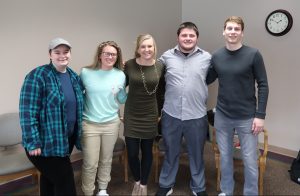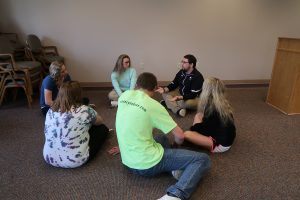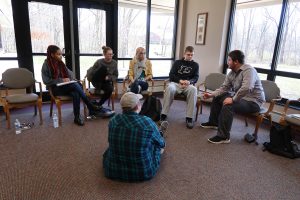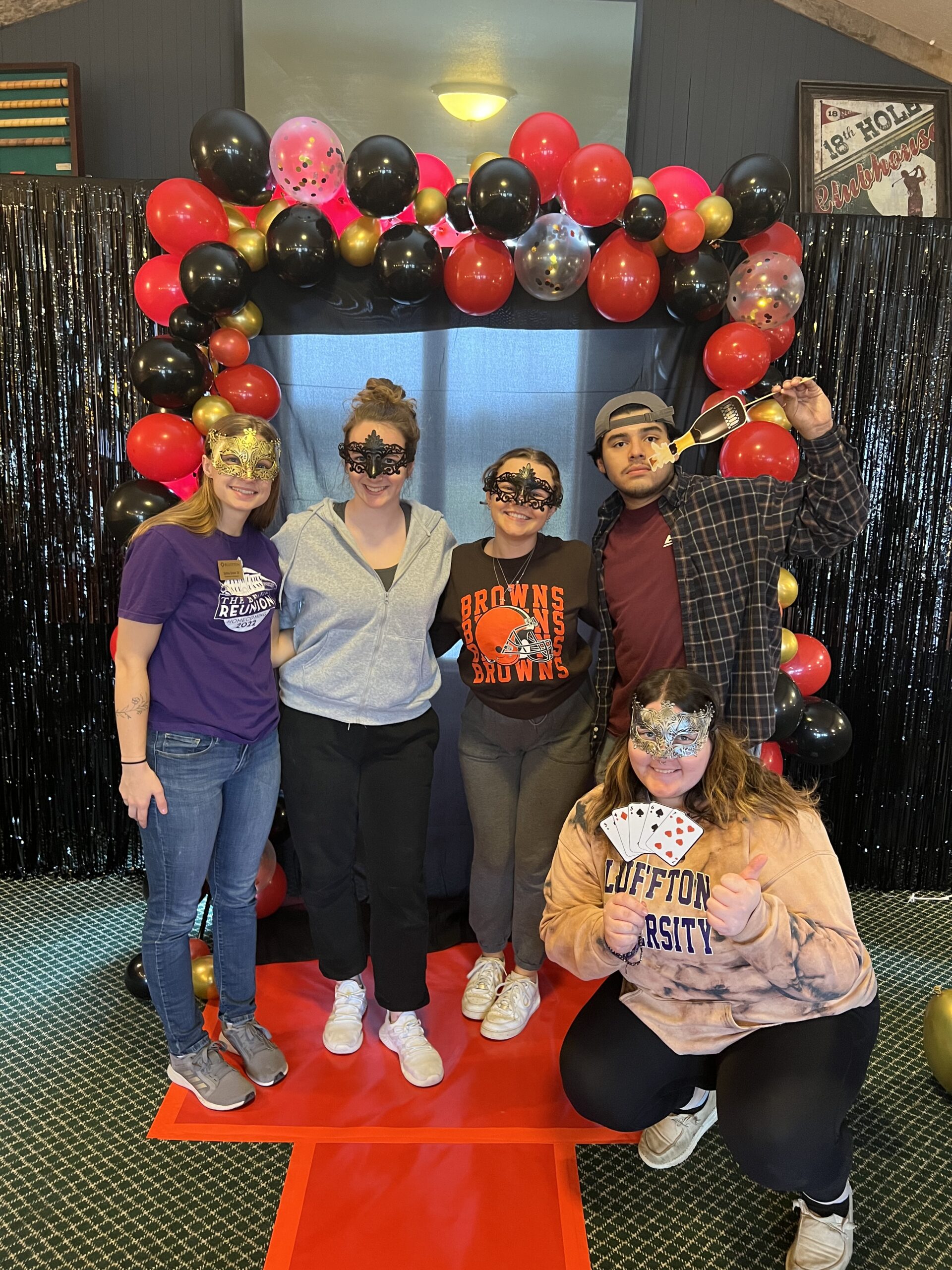This year’s Civic Engagement Day theme was “Integrity, Truth, Virtue: Bluffton’s Honor Code in the World,” which celebrates the 100th year of Bluffton’s Honor Code. This year there were 27 presentations throughout the day where students, faculty and staff had the option of attending.
One of the presentations was a group from the Theatre for Social Change class where they did different activities surrounding the topic of bullying with a talkback following the performance. The question of focus was “Why do some bullies get rewarded?”

Left to right: Autumn Graves, Carleigh Ankerman, Genna Zachrich, Jarrett Meeker, Kevin Christie. Photo by Nicole Centofanti.
“We thought it would be good to let other students know what theatre for social change was about, and this gave them an inside look of the class itself,” said freshman Carleigh Ankerman, one of the group presenters. “[It] also gave us the opportunity to show future educators that this type of bully happens inside schools, and they could have a chance to change that, too.”
After introducing their group, they lead the participants in a warm-up activity called “Defender.”
“Defender” is a quiet activity where the participants start off by moving around the room. Then, each person is asked to silently pick someone to be their “protector.” They are then asked to silently pick someone to be their “enemy.” The participants are then told to keep their protector between them and their enemy without it being obvious.
After the warm-up activity, they group moved on to the bridging activity.
The participants were put into four groups. Each group was then told to pick one person to be the “sculpture” while everyone else was the “clay.” The sculptures were told to “mold” their clay into scenes they thought represented bullying. Each group go to show their scene to the other groups, and the participants that were not presenting were asked to describe the scene in one word.

Student presenters interact with student attendees. Photo by Nicole Centofanti.
Next was the activating scene. This is where two members from the group leading the “Bullying” presentation acted out a scene. The scene began with the principal at a school assembly praising the school’s star football player, “Chad” and wanted everyone to support him at the football game. However, one of the students in the audience was shouting “Chad’s a bully” while the principal was talking.
The principal then called the student into his office, but he did not believe the student that Chad was a bully. At this point the scene ended and participants were asked questions about what was just was presented to them. Then, participants could replace the student who was sent to the principal’s office to act out an idea they had to improve upon the situation.
“One of the themes that stuck out was truth, like honesty with bullying,” said Ankerman. “Just a way to stop it is just being honest with yourself and seeing how you could be impacting others, and how it’s not right.”

Students discuss the different scenarios presented. Photo by Nicole Centofanti.
At the end of the activating scene, the participants again broke up into groups to discuss bullying and their own experiences with it as a way to process what they just experienced with the activity.
“On the simple side, I don’t want bullying to happen in schools,” said Ankerman. “I’d like it to end, and we saw it [with the] school board letting it slide.”






